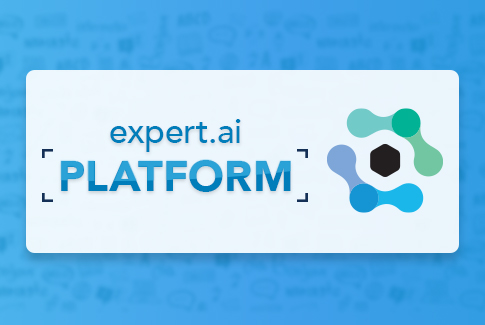
Can AI be trusted?
It’s a fair question when you consider that AI is being adopted across nearly every industry for a multitude of applications. Add in the fact that many of these models are acting autonomously based on algorithmic input and you see that this question cannot be ignored.
Key to trustworthy AI is the element of explainability. In other words, you should understand how certain inputs lead to given outputs. One way to ensure this happens is establishing explainable inputs, or features. This puts the spotlight on your feature engineering process.
Feature Engineering Defined
Feature engineering is the data preparation process that establishes which information you collect from data to train your machine learning model. In the context of natural language, “features” are the words or groups of words and phrases that you define in this process.
For example, for an algorithm to recognize that “baseball” is related to “sports,” the term baseball would be prevalent in all training documents labeled as sports. By recognizing this trend, the algorithm establishes a connection that conveys some meaning about the identified words, on which the documents are tagged and used to train the system.
The features you select are largely responsible for the efficacy and accuracy of your model. They establish the parameters for your model that ultimately determine how certain input data leads to certain outputs. As a result, domain knowledge is critical to extracting the right features from your raw data (e.g., documents). This is where things become tricky.
Training Data Challenges
Because it can take millions of documents to properly train a machine learning algorithm, analyzing them all manually to identify the proper features is an arduous task. Not only does it take time to read each document, but it requires domain expertise to understand the content and discern which terms and concepts are most relevant to the desired outputs.
Both time and expertise are finite resources. Therefore, the data preparation phase of building a machine learning model (inclusive of feature engineering) can span as much as 80% of the total project time. This is not sustainable but, then again, approaches to scaling expertise are not completely viable either.
Many companies leverage standard keyword search methods to scale their review of documents for potential features. While this does help in terms of processing speed, it lacks the human knowledge required to contextualize the information. Thus, terms may appear frequently in your data while referring to different topics (e.g., house referring to a home vs. the act of holding something). Not only does this misconstrue what the actual focus of the data is, but it can misinterpret the importance of the keyword itself.
The whole purpose of feature engineering is to determine what inputs are relevant to your application. If you cannot confidently assess that yourself, your model will have significant issues from the start.
Building Explainable Features
For AI models to be trusted and precise, feature engineering needs to be more accurate and intelligent. To achieve this, you need to understand the features being extracted. This not only requires deep domain knowledge, but a human-like level of language comprehension as well. Natural language understanding techniques can help you meet these requirements and apply your expertise at scale. More importantly, they can do so in support of your machine learning model.
In a hybrid approach, the combination of the rule-based logic of symbolic AI with the supervised and automated capabilities of machine learning make feature engineering more efficient, more accurate and, ultimately, more explainable. The process is made easy with expert.ai’s natural language technology.
With our rich knowledge graph, you can analyze all your raw data and automatically extract the most valuable information from it. This analysis goes beyond basic word understanding to recognize phrases and groups of words that heuristically appear connected. In addition, you can identify potentially valuable data relating to document sentiment, the subject of the main sentence and more.
This information enables you to create richer feature sets for your model which, in turn, establish more meaningful connections between inputs. Best of all, these features are explainable as they are determined by rule-based logic. This is how you establish trust in your AI models and satisfy the regulations being developed to safeguard consumers against AI risk.
The reality is, no machine learning model is completely explainable. Once data is input into your algorithm, you lose visibility into the decision-making process. With that said, if you base your algorithm on explainable features, you instantly have a baseline from which you can evaluate data discrepancies.
Feature engineering is one of the most important parts of the model building process. It can make or break the success you have with your model. Apply knowledge and expertise to the process from the start and establish the trust you need between your organization and its customers.


